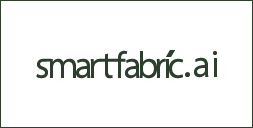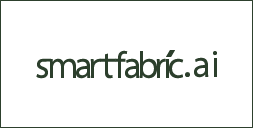Big data and machine learning capability are increasingly becoming standard project control tools. In the second article in our series on data governance and management, AECOM’s Niru Sundararajah shows why solid foundations for data management are crucial to successful analytical outcomes.
In the current era of big data, much ink has been spilt on the unbridled potential of Artificial Intelligence (AI) to revolutionise the construction industry. Sector focused magazines and websites are abound with organisational case studies highlighting the latest AI implementation success stories ranging from the improvement of cost prediction capabilities to enhanced abilities to detect project risks – enticing their industrial peers to jump onto this promising bandwagon.
The lure of AI is both understandable and justifiable. Within the AECOM Cost Intelligence team, our foray into this field has enabled us to improve both the quality and efficiency of our services. Our clients are becoming increasingly conscious about the potential of data to enable better prediction and enhance decision making processes. To that end, we have successfully created AI tools that perform more accurate cost predictions with much less effort compared to current processes.
Yet, despite the largely positive collective experience within and beyond our organisation, it is fair to say that the potential offered by AI remains largely untapped and this is in no small part due to the challenges related to the data quality and quantity.
The need for data
The vast majority of AI applications function by inferring trends and patterns in existing datasets before formulating predictions. As such, successful implementations of AI typically require large quantities of high-quality data to perform optimally. Deficiencies in either data quality or quantity has proven to be a significant stumbling block for AI adoption in many organisations, within and beyond the construction industry. Effective data governance holds the key for organisations to successfully navigate this hurdle.
What is data governance?
Data Management Association (DAMA) defines data governance as “the exercise of authority and control (planning, monitoring, and enforcement) over the management of data assets”. The Data Governance Institute defines data governance as “a system of decision rights and accountabilities for information-related processes, executed according to agreed-upon models which describe who can take what actions with what information, and when, under what circumstances, using what methods.” In essence, data governance concerns the deployment of the right mixture of process, technology and personnel to govern the input, storage and usage of data to achieve organisational objectives.
Data governance frameworks typically have a wide reach and could vary based on organisational needs. That said, there are several key aspects that are commonly present across most data governance frameworks (see Figure 1):
· Stewardship: Promoting accountability by assigning stewards/custodians to relevant datasets
· Accessibility: Facilitating availability of data for relevant stakeholders
· Data Security: Ensuring sensitivity-based safeguarding measures are implemented on databases
· Data Quality: Maintaining and monitoring data quality to ensure its suitability for intended applications
· Knowledge: Preserving and improving data knowledge within the organisation by ensuring documentation of data systems and related processes are kept up to date.
How is data governance relevant to AI?
While data governance facilitates the implementation of AI through various aspects, the most critical contribution is its facilitation of high-quality data collection. This is achieved through various means; most critically through its emphasis on data quality.
An effective data governance framework emphasises data quality by defining data quality requirements and monitoring this requirement against relevant metrics. This function is bolstered through the identification data stewards to promote accountability and encourage initiative amongst stakeholders to maintain the quality of data to the required standards. By pursuing this, the burden of maintaining data quality can be shared across many actors – particularly amongst those upstream of the data pipeline. The focus on knowledge capture and transfer, on the other hand, ensures that members are kept abreast with the data needs of the organisation while also maintaining consistency in the organisation’s practice by assuring continuity in the face of personnel changes.
What are other benefits of data governance?
Data governance is pivotal in aiding organisations to achieve a myriad of other objectives besides AI adoption. This framework has been pivotal for many financial institutions to achieve regulatory compliance. Further, effective data governance frameworks enable organisations to standardise various business processes and improve operational efficiency. From an asset management perspective, the implementation of a robust data governance framework is critical to ensure compliance with ISO 55001 by enabling processes and systems to satisfy the data requirements outlined by this standard. Further, by emphasising data quality across all levels of an organisation, data governance facilitates data-driven decision-making with or without AI implementation.
Who is responsible for data governance?
As with most critical business functions, data governance requires collective effort for successful implementation. That said, buy-in and direction from the leaders of an organisation is critical to ensure that this process is in line with wider business objectives and strategy. Further, a top-down intervention is pivotal to ensure data governance related tasks are afforded the requisite prioritisation amongst other BAU activities. By promoting data consciousness at the top of the organisation, it will be easier to shape the right culture. Only by doing this, can the benefits offered by AI be sustainably leveraged.
How can we help?
We work extensively on various facets of data governance with our clients across the built environment sector. We have helped our clients improve their data pipeline and systems across our diverse portfolio of projects. Our combination of technical, organisational and commercial skills enables us to work with different stakeholders across organisations on a wide variety of projects ranging from the deployment of data systems to the formulation of organisational data strategies.
We have also developed a standardised data quality assessment framework based on recognised industry standards. As data quality is a key tenet of data governance, this framework has facilitated the adoption of best practice to enable our clients to achieve their data governance objectives.
Further, with our knowledge of AI we actively assist our clients in reshaping their data processes and systems in accordance with AI system requirements; enabling our clients to fully leverage the potential AI has to offer for their organisation.
Data governance in banking refers to the framework and practices that ensure the effective management, quality, security, and compliance of data within the banking industry. Given the sensitivity and volume of data handled by banks, strong governance is essential to maintain trust, mitigate risks, and comply with regulatory requirements. Here are key aspects:
1. Regulatory Compliance:
- Basel III, Dodd-Frank, GDPR, and more: Banks must comply with various regulations, from capital adequacy (Basel III) to consumer protection (Dodd-Frank) and data protection (GDPR). Data governance ensures adherence to these regulations, minimizing legal risks and penalties.
2. Data Quality and Integrity:
- Ensuring accuracy, completeness, and consistency of data is crucial. Banks rely on data for customer profiles, transactions, risk management, and regulatory reporting. Governance frameworks establish standards for data quality and regular audits to maintain integrity.
3. Data Security and Privacy:
- Protecting sensitive customer information (PII - Personally Identifiable Information) is paramount. Data governance establishes protocols for encryption, access controls, authentication, and monitoring to prevent data breaches and uphold customer privacy.
4. Risk Management:
- Governance frameworks include risk assessment and mitigation strategies. Banks assess data-related risks, such as cybersecurity threats, data loss, or unauthorized access, and develop protocols to address them.
5. Data Lifecycle Management:
- Banks deal with vast amounts of data throughout its lifecycle - from collection to archival or deletion. Data governance ensures proper management at each stage, including data retention policies and disposal procedures.
6. Data Governance Framework:
- Establishing clear roles, responsibilities, and processes is essential. This includes creating data stewardship roles, defining data ownership, and outlining workflows for data management, approval, and access.
7. Technology Infrastructure:
- Adopting robust data management systems and technologies is crucial. Banks employ data warehouses, data lakes, and advanced analytics tools while ensuring compatibility, scalability, and security.
8. Customer Trust and Experience:
- Effective data governance fosters trust by ensuring the accuracy of financial statements, secure transactions, and personalized customer experiences based on reliable data insights.
9. Audit and Compliance Reporting:
- Banks need to provide evidence of compliance and adherence to governance policies. Regular audits and comprehensive reporting mechanisms are crucial for regulatory oversight and internal control.
10. Training and Awareness:
- Employees must be well-trained on data handling, privacy protocols, and governance policies. Regular training sessions and awareness programs help maintain a culture of data compliance and security.
Data governance in banking is an ongoing process, continually adapting to new regulatory changes, technological advancements, and evolving threats. Its primary goal is to ensure that data remains an asset rather than a liability, supporting the bank's operations and fostering trust among stakeholders.












